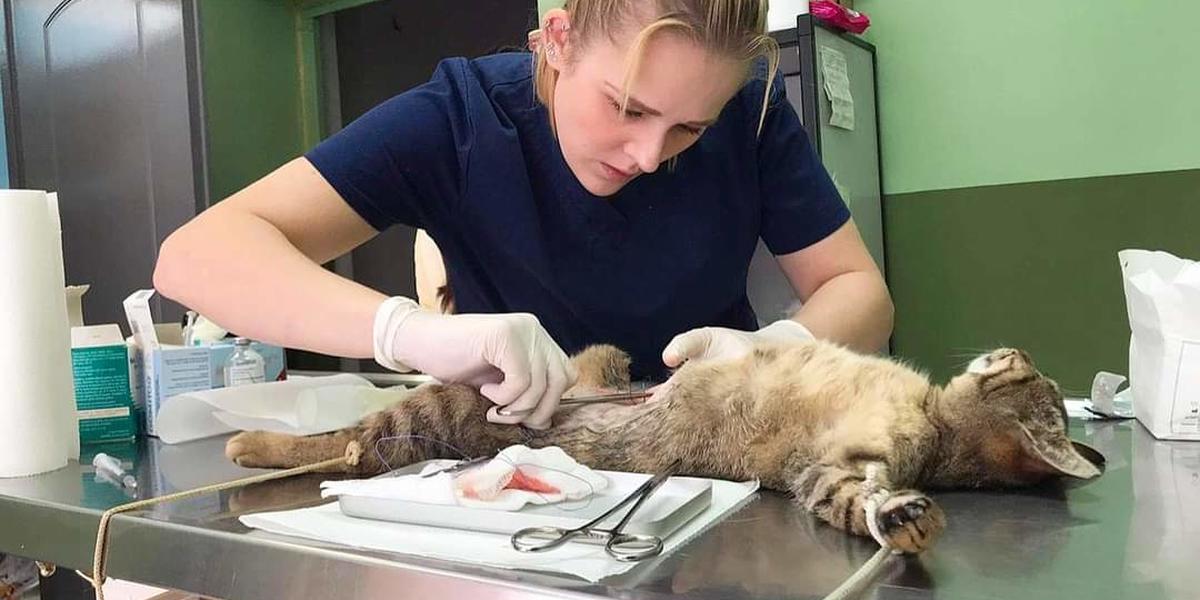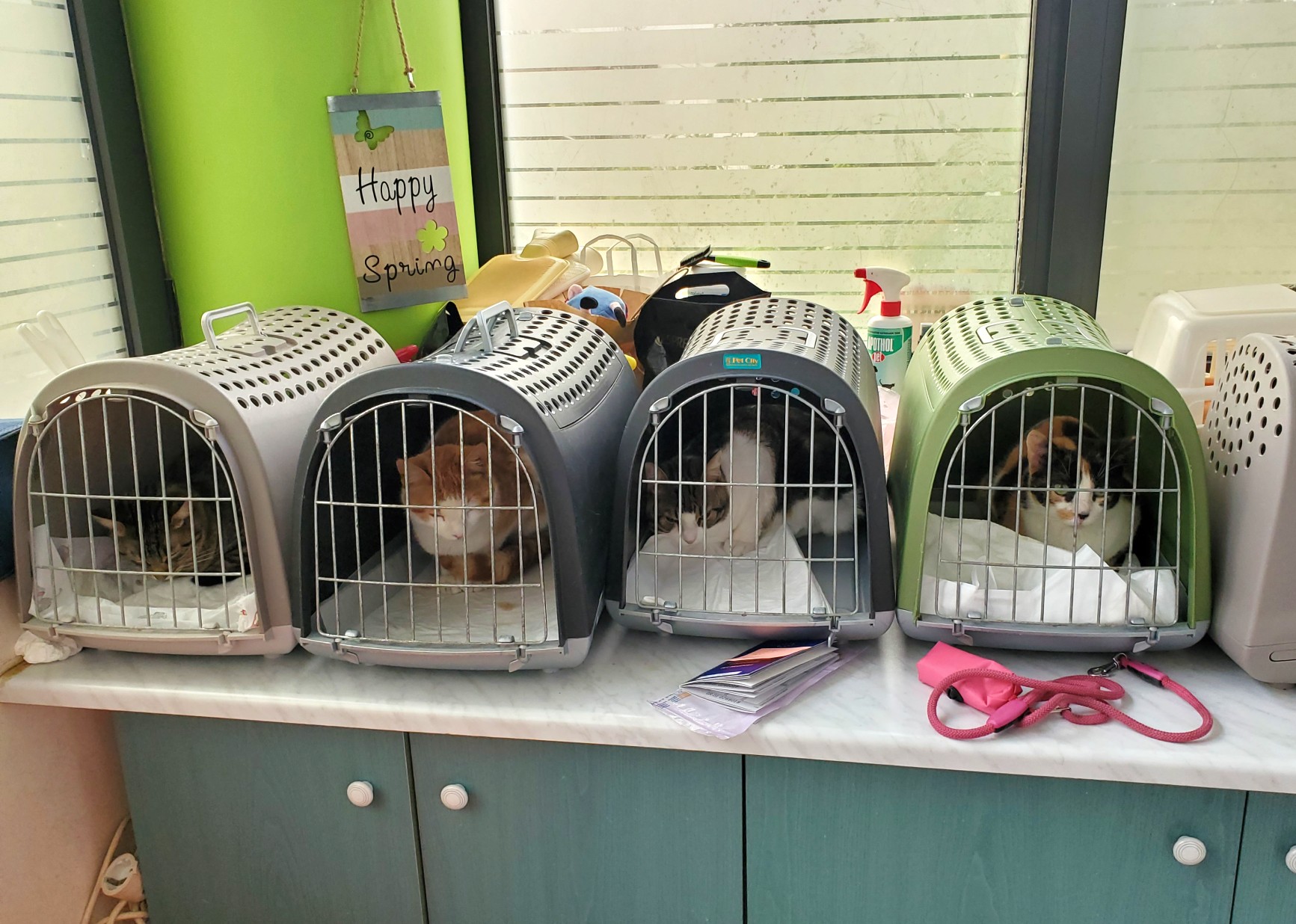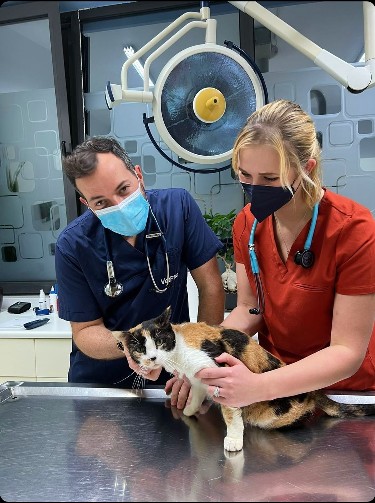Going Greek
Vet students gain hands-on experience abroad helping animal welfare organization

Vet students gain hands-on experience abroad helping animal welfare organization
College of Veterinary Medicine DVM student Ashley Walker performs a spay procedure on a cat. Photo courtesy of Ashley Walker.
On a sunny day in June, Gabriella Jimenez found herself at a wildlife rescue center in Kallithea, Greece, a coastal city outside of Athens.
Earlier in the day, she had handled and fed the center’s raptors, reptiles, and mammals. Now, she was getting first-hand veterinary experience drawing blood––from the resident pelican.
“That was really cool, and I don’t think I would have gotten that experience at such an early stage in my vet career here,” says Jimenez, who just finished her first year in the DVM program at the University of Minnesota (UMN).
Jimenez is one of five students in the College of Veterinary Medicine (CVM) to spend three weeks in Greece externing with Let's be S.M.A.R.T.––Successfully Managing Animal Rights Today––an animal welfare organization based in New York that works in Greece.
The unique opportunity allows students to get hands-on experience in veterinary medicine, working largely with rescued stray cats, but also getting the chance to work with pets and wildlife. The experience evolves based on what’s needed.
“It ended up being a good mix of strays, pets, and wildlife,” Jimenez says.

Ashley Walker, DVM, a recent graduate of the DVM program, was the first to spend nearly a month on the rescue’s property just outside of Athens, where rescued cats are free to roam the villa, bask in the sun, and snuggle with their caretakers. It was this feline focus that drew her to the S.M.A.R.T. program. She got to be an active participant in 10 spays, neuters, and several microchippings.
“My end goal is to own a feline-specific clinic,” Walker says. “I know so many amazing dog-focused vets but there aren’t as many feline-focused vets that are answering the questions and specific needs that feline owners have.”
Each day at her externship was different, which exposed her to many different scenarios and learning opportunities she wouldn’t have gotten at a single clinic, Walker said.
She spent time in a low-cost veterinary clinic that operated with barebones amenities. There also was a more typical veterinary hospital in the rotation, which had multiple exam rooms, radiographs, and anesthesia. The third was a small clinic that attracted Instagram-famous vets and celebrity pet owners whose cats and dogs needed care while they traveled in Greece.
“The doctors were pretty open in letting us do different things,” says Rachel Soans, who just completed her first year in the DVM program and traveled to Greece in June.
The team of seasoned veterinarians worked with every student on their skill and comfort level, making sure they got the experience they were looking for. For the first time, Soans got to complete a neuter on a cat.
“They were really nice about walking me through it even though I had never done it before. During any procedure that was done, they were so good about explaining exactly what they were doing and answering our questions,” Soans says.
Dr. Erin Burton, senior associate dean of academic affairs at the College of Veterinary Medicine, is leading the charge to get UMN CVM students into the field in capacities that allow them to grow outside the classroom.
“In the past several years we started to think outside the box when creating student experiences that give them more of an authentic, boots-on-the-ground veterinary experience,” Burton says.
The college and CVM students run several local organizations that get students into the field, including VeTOUCH, which works with low-income communities, and SIRVS, which is a partnership that helps bring veterinary care to Native American reservations throughout Minnesota.
Opportunities to work abroad expand on these experiences that teach students to work in different capacities, hone communication skills, and be open to new ways of practicing.

“It gets them exposed to different cultures, different scenarios we wouldn’t be able to give them at the Veterinary Medical Center,” Burton says. “Working with different cultures, language, unfamiliar equipment and spaces, and having to think critically on their feet makes students like Ashley, Gabriella, and Rachel much more nimble to the diverse vet landscape.”
For Soans, the experience was an exchange of knowledge as much as a learning experience. She lived with other veterinary students from around the world, who were able to learn from each other. It’s an experience Walker would recommend to any veterinary student.
“Definitely take the opportunity to work abroad if it comes to you. It opens your mind to what is most important in vet medicine, which is that we all try to do our best with the resources that are available. Not every person or every hospital is going to have the budget or supplies to do top-tier medicine, but doing something is better than doing nothing,” Walker says.